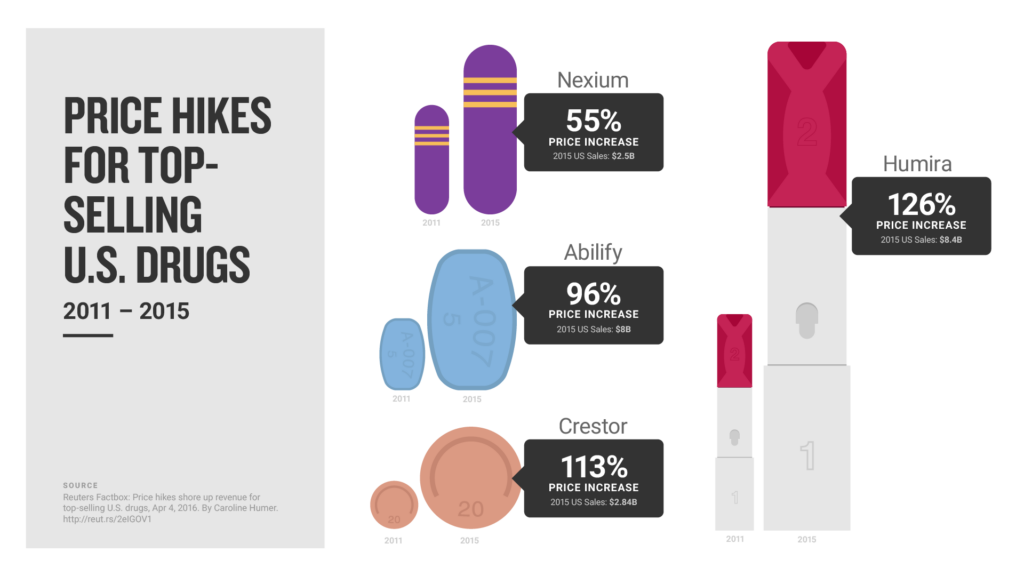Pharmacy sticker shock: Prices rise for top-selling U.S. drugs
Voices for Affordable Health has catalogued the eye-popping statistics on pharmaceutical drugs. Prescription price inflation was 7.2 in 2015 – more than twice the rate of overall inflation. The average price of brand-name drugs jumped by 164 percent between 2008 and 2015, compared to a 12 percent increase in the consumer price index. And Americans spend more per capita on prescription drugs than any other country in the world.
How do those statistics translate into what patients feel?
Here are examples of increases from four of the top 10 brand-name drugs by U.S. sales from 2011 to 2015, as reported by Reuters in April.
- Nexium, by AstraZeneca, treats acid reflux. The monthly supply cost increased 54 percent.
- Abilify, by Otsuka Pharmaceutical, treats depression. The monthly supply increased 96 percent.
- Crestor, by AstraZeneca, treats high cholesterol. The three-month supply rose 113 percent.
- Humira, by AbbVie, treats rheumatoid arthritis, among other conditions that cause inflammation. The typical monthly treatment soared 126 percent.

These increases do not reflect rebates that consumers receive through drug coupon programs, which Voices for Affordable Health has examined more closely. In a recent Your Cost Watch post, we shared a new report that shows co-payment coupons actually increase total health care spending by encouraging patients to choose more expensive drugs when lower-priced substitutes are available. High costs then bounce back to all patients in the form of higher insurance premiums, as this report from The New York Times found.
Have you seen your prescription drug costs go up? Share your story here.